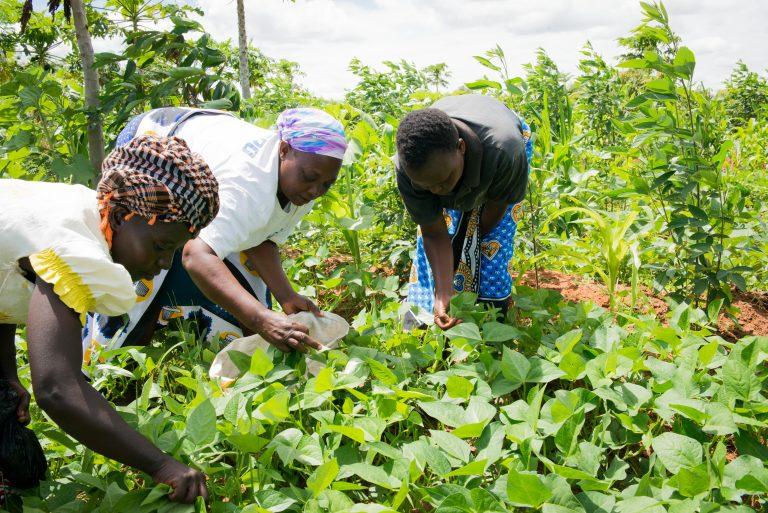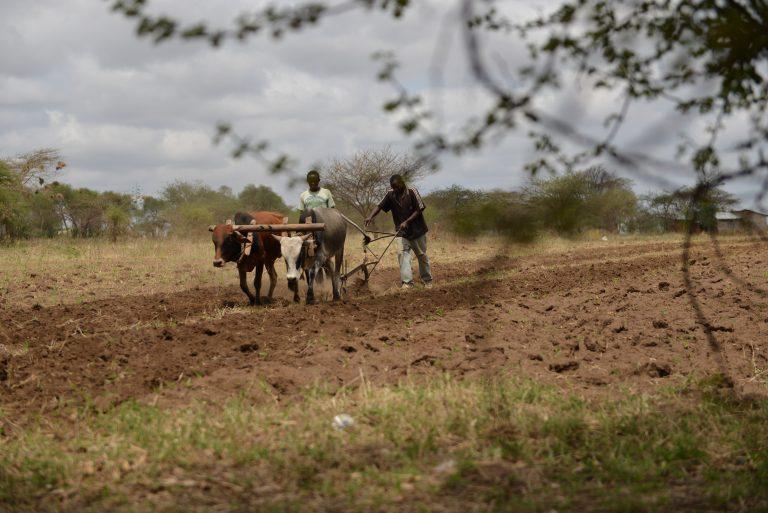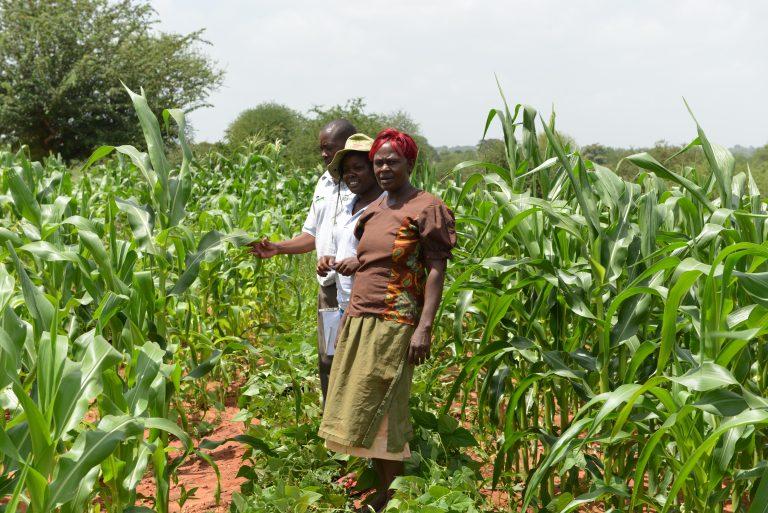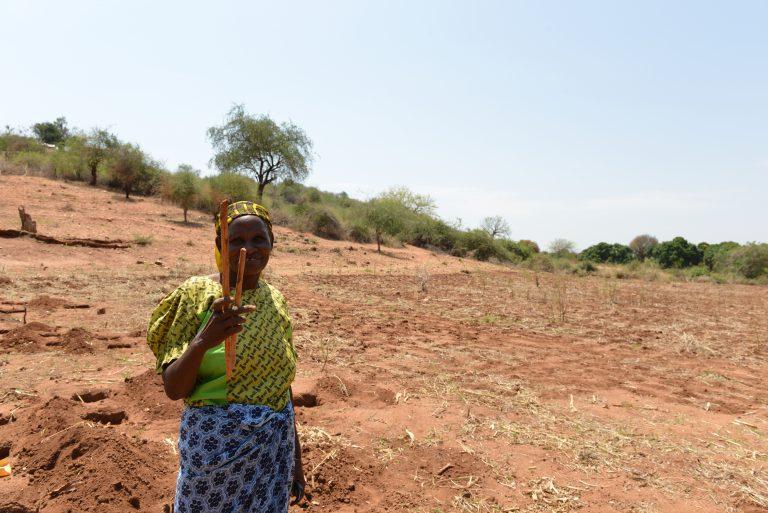Women in Kenya Improve Their Families’ Food Security Through Simple Land-Restoration Technology
Despite challenges from both the land and society, women are taking control of their farms, with impressive results
Agricultural innovations in Africa aimed at improving the productivity of smallholders, especially women, are necessarily subject to accommodating multiple needs, which in turn depend on differing priorities, preferences and access to resources.
Renting an ox-drawn plough, for example, operated by young, able-bodied men is not an easy option for many cash-strapped farmers, particularly the women who make up the majority of farmers in the drylands of what is known as Kambaland in southeastern Kenya.
“It is too expensive to rent the bulls and pay for the young men,” said Veronicah Ngau of Mutembuku village, Makueni County. “Even if I beg someone for free help I have to wait until they are finished with their own work.”
She gave up on ox-drawn tilling after three consecutive failed rains yielded stunted crops barely knee high.
“But technologies like terracing and sunken-bed kitchen gardens have helped us cope. Although it was only in 2016 that I started to see a big change in what the land can produce,” she said. “In two planting seasons, I went from a usual 50 to 90 kilograms maize harvest from two acres of land to 270 kilograms from only one acre.”
This dramatic difference was achieved by nothing other than simple planting basins, which are a water-conservation technology. The basins are part of a project funded by the European Union and the International Fund for Agricultural Development on restoring land for food security, which complements a Netherlands-funded Drylands Development Programme. The planting basins, developed originally by farmers in West Africa, are being modified and tested in several countries. The project is a partnership between farmers, World Agroforestry Centre (ICRAF), World Vision, Adventist Development and Relief Agency, Caritas Internationalis and governments. ICRAF is leading the research component.
“When I started with 200 basins in a corner of my farm,” said Ngau, ‘the idea was to compare the maize yields with our normal way of farming. But in 2016, when we all lost our crops except those in the basins, I decided to switch and make more for myself. Now I have covered half of my two acres with basins, which helped us last season during yet another drought. Many of us with the basins were able to feed our neighbours who were not part of the project. They came to get some ears of maize every day. I was happy we were all able to eat. And at harvest time I still got 270 kilograms, which kept us going until the following planting season. Now others come to us to teach them how to make their basins.”
Preliminary results show that the size of the basins and their combination with other practices, such as applying manure and mulching, determine their impact on maize production under different conditions. But what are perhaps more difficult to accurately assess are the implications for labour and time. A 60 x 60 cm pit, for example, takes about an hour for a woman in her fifties, like Ngau, to prepare. She doesn’t have children at home to help nor do many of her neighbours. Their solution was to convene a group of 10 women from the project’s community of practice and collectively dig three pits a week at each other’s homes. Ngau would come home and dig another three of her own.
Ngau’s success was enabled by the existence of the community of practice and her ability to mobilize her peers to work together. These factors are likely to vary between farmers and communities and will determine the success or failure of the technology.
An additional issue is women’s right to make decisions about their farms. Evidence shows that traditional gender norms and roles, as well as tenure rights, can limit women’s participation in decision-making about the use of land. But it seems that the migration of men, combined with the success witnessed by some of the participating farmers, has influenced decision-making dynamics at the project sites.
“We didn’t even have to ask our husbands for permission,” said Mary, another farmer in Machakos County. “Our husbands are not concerned with food production. They are mostly away and when they do have an opinion on where tree seedlings should be planted, for example, we allow them to choose their space first then we plant in our own choice of space.”
Most of the men would typically be engaged with livestock and poultry trading or have migrated to to earn cash. Producing food rests on women’s shoulders, many of whom are subsistence smallholders with increasingly unproductive land. Severe degradation of the land coupled with drastic changes in climate has meant that many families frequently face food shortages, a situation that the planting basins have helped improve.
Community facilitators engaged with the projects observe, however, that even from afar the male household heads still have the final say on what is done with the land, including the digging of basins. But once they give consent for a plot to be used for planting basins, the women on the farm take over all other management decisions.
An in-depth study is underway to assess how this and other land restoration technologies can change gender dynamics considering the social context and the specific challenges that female and male farmers face in using them.
This work is linked to the CGIAR Research Program on Forests, Trees and Agroforestry. ICRAF The World Agroforestry Centre is one of the 15 members of the CGIAR, a global partnership for a food-secure future. We thank all donors who support research in development through their contributions to the CGIAR Fund.





